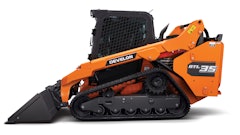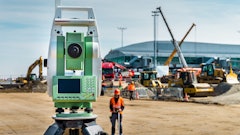
Tier 4 Diesel Engine regulations are some of the harshest you can come by for off-highway diesel engines. These regulations are put in place for any engine over 24 hp. The Tier 4 standard is important because of its drastic improvement in human life. Emissions like nitrogen oxide (NOx) and particulate matter, also known as soot, are damaging to the lungs and can heavily damage the environment.
The guidelines put in place to manage these emissions and better handle the engines are essential to the betterment of society and the environment.
Meeting Tier 4 Diesel Engine Standards
While engine design faced major improvements, making diesel engines today one of the purest and cleanest types of engine available, the engines had yet to meet the Tier 4 regulations. In order to meet the regulation standards, the engine required exhaust after treatment.
These are the three main exhaust treatments available:
Diesel Particulate Filter - This method is capable of capturing and incinerating particulate matter produced by many diesel engines.
Exhaust Gas Recirculation - While this method helps reduce NOx production, it actually increases the particulate emissions. Due to the raised particulate emissions, in order to meet the Tier 4 standard, this method has to be used in combination with Diesel Particulate Filter.
Selective Catalytic Reduction - This method manages to handle the emissions by adding ammonia to it in a 1:20 gal. ratio.
All three of these options can reduce emissions enough to qualify the engine for the Tier 4 regulations. However, Exhaust Gas Recirculation is a little bit more tricky to handle since it requires the use of another method to meet the standard.
Partly due to the after-treatment systems, Tier 4 engines tend to be significantly larger than the prior Tiers.
What the Tier 4 Standard Does
The Environmental Protection Agency (EPA) first put the standard into place in 2008. Over a seven-year period, the EPA gradually worked up to the full implementation of Tier 4 regulations in 2015. These standards were established to combat the rising levels of NOx and particulate emissions. This proved to be very successful as the emissions and soot levels decreased by 99% from 1996 to 2015.
Other than bringing safety benefits to the world, the Tier 4 standard can bring some complications to those who deal with them. Tier 4 engines often run much hotter than the other Tiers. This heat difference causes the Tier 4 engines to need many more parts built into and around the engine to keep things cool, protected, and running smoothly.
These engines can also be a bit cumbersome due to their larger size. In addition, they have fewer coolant ports and mounting spots.
Even though this Tier of engine is slightly more of a hassle than the previous Tiers, the benefits of the regulations outweigh the drawbacks.
Learn More: Why Heavy-duty Diesel Engines are Transitioning to Lower Viscosity Oil
Diesel Engines Exempted from Tier 4
There are some engines exempt from Tier 4 standards, at least for now. While this Tier of regulation for diesel engines is quite strict, some types don’t have to worry about it at all since not all engines fit into the category of Tier 4 engines.
The Tier 4 regulations exempt all engines under 24 hp as well as specific off-highway diesel engines including:
Watercrafts
Mining machines
Hobby engines that are under 50 cubic cm per cylinder
Railway locomotives
Each of these machine types listed has separate guidelines to follow instead and some even answer to a governing body different from the EPA. But, there is a new Tier that may make its debut. This Tier has not been officially accepted by the EPA yet, but it is currently in place in Europe. This European Standard is referred to as Stage V.
It is assumed that if the United States were to take on this standard, it would be called Tier 5. With the possibility of Tier 5 coming into place, engines once exempt would be included in the emissions standards of Tier 4. The Tier 5 standard would focus on eliminating the sub-micron level particles which are the super small particles in soot. The technology available today should be able to tackle this task quite easily. Now, we’ll just have to see if Tier 5 standards become the new law of the land.
While the world and the way people maneuver it are changing every day, the regulations held in place to keep things safe and as non-damaging as possible continue to evolve. The Tier 4 final regulations for diesel engines are a prominent guideline for qualifying engines and may serve as a baseline as the standards begin to update in the years to come.
Register a free IRONPROS account today to access product search tools, connect directly with brands and more!


























